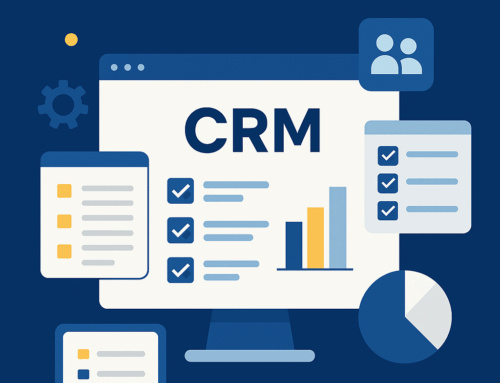WHAT IS A SMART GOAL?
SMART goals are a structured way of creating long term goals that increases the likelihood of success. In fact, businesses that implemented the SMART goals process experienced a 76% increase in the likelihood of meeting their goals.
SMART is an acronym that stands for Specific, Measurable, Achievable, Relevant and Time bound. Each category addresses a different aspect of goal setting that helps reinforce a strategy for success. It is believed that George T. Doran first used this acronym in the November 1981 issue of Management Review, but it has been adopted largely by businesses looking to improve their results.
In this article we will examine each letter of the acronym in greater detail, and how to use SMART goals for campaigns.

HOW TO USE SMART GOALS FOR CAMPAIGNS:
Let’s explore how to use SMART goals for an upcoming marketing campaign. To do so, we’ll define each part of the acronym to understand what constitutes a true SMART goal and why.
SPECIFIC
Before you can consider how to use SMART goals for campaigns, you need to be specific about what you want to achieve. This section is kind of like a mission statement for your desired goals. Mostly at this stage you will be asking the popular “w” questions, and here are a few examples:
- Which limitations and resources do you have to work with?
- Where is the location of the goal?
- Who are the individuals that will help you meet the goals?
- Why are you trying to achieve the goal?
- What specific goals do you need to achieve?
The secret is defining specific answers to as many of these questions as possible. This ensures you can visualize the goal before you get started. Visualization is a powerful technique that increases your chances of success.
The problem of not being specific is that it can be challenging to achieve an unclear mission. When the goal is vague the results will also be vague, and typically disappointing. Furthermore, how will you know when you have actually reached your goal? If it cannot be defined within certain parameters, the goal post can be constantly moved.
Specific goals increase the level of motivation – especially if they are broken down into actionable segments. Creating mini-goals is a great way of staying on track to achieve the ultimate goal.

MEASURABLE
Once the goals have been defined you need a way of measuring them. This helps you stay motivated and clued up on how much progress is actually being made. When you are close to reaching your goals the excitement of getting to the finish line can give you a much needed boost to stay the course.
Here are a few questions you need to ask during this phase:
- How will the goal be achieved?
- How many?
- How much?
- How accurate is this data?
- Are there multiple sources I can compare to validate these results?
For example, let’s say that you are doing a split testing campaign where you are running two different versions of a landing page. The final goal could be to send 10,000 unique visitors to each page. By monitoring your analytics software you can easily figure out when this goal is reached. Also by taking into account the average amount of visitors you receive per day, the length of time to reach the goal can also be calculated. You can prove, not just believe, that one landing page design was more effective.
Generally, it’s a good idea to check on the measurable data on a scheduled basis. This helps figure out if you are on track to meet your goals. If there is a problem, then you can make changes to the process.

ACHIEVABLE
Unrealistic goal setting is one of the biggest reasons why goals are not met. Overwhelming goals are counterproductive and can lead to a downward spiral of failure. When a goal is not met you’ll get discouraged and that in turn might instill the belief that future goals cannot be met.
You need to consider the first two acronyms to determine how realistic the goal is. Take a close look at your deadline, resources and personnel to determine what can be achieved. It’s easier to set realistic goals when you understand what you have to work with.
However, do not set goals that are not ambitious. Goals that can be met too easily can be demotivating. You need to be excited by the prospect of striving to achieve a goal, so when you reach the top of the mountain you actually feel like you’ve accomplished something.
It’s also a good idea to create mini-goals that act as milestones towards the ultimate goal. Each time you reach a mini-goal you’ll feel a sense of accomplishment. It gives you hope that other goals can be met and therefore you’ll push forward.
Finally, try to set the goals that you can control and are important to you. Goals that are based on pure chance are destructive, because you can give it your best shot and still come up short – it’s not a recipe for success.

RELEVANT
The saying, “be careful what you wish for”, certainly applies here. You need to determine if the goal is something that you actually want and is relevant with other goals. It would be disappointing if you were to set a goal that upon achieving you realized did not matter.
Business goals need to meet more objectives than simply profit. For example, increasing the market share, improving brand awareness and developing a wider range of products should also be considered. At Cubicle Ninjas, we often set goals to learn new techniques or technologies.
A goal can be considered as relevant if it can answer “yes” to the majority of these questions:
- Is it relevant to the modern socio-economic environment?
- Am I the right fit for this specific goal?
- Does this goal take advantage of the skill and experience available?
- Is the timing for the goal right?
- Will this goal make me happy, or improve the business?
These are just some of the questions that you can ask before deciding on the relevancy of the goal. More specific questions might be better suited to your industry and the nature of your business.

TIME-BOUND
A timeline needs to be established for a goal to be finalized. The difficulty of the goal is somewhat based on the amount of time you have to complete it. For example, it might be easy to reach a 1 million dollar turnover within 5 years, but very hard within a year.
It’s sensible to break a goal down into steps and that’s done by creating time-based milestones. For example, if you have a content plan of publishing 100 blogs, then you could setup the goal to publish 20 blogs per month. You can even go a step further and set a goal for publishing 5 blogs per week.
Some people tend to work better when they have micro-goals to work for. What can be done today, or within the next few hours? When goal setting allows for a flexible structure the effectiveness of the team achieving those goals can improve.
Ideally, the time allocated for a goal should have a balance of pushing you to work hard, but not be so harsh that you feel overwhelmed. Get a second opinion if you’re having issues with setting the right amount of time.

THE ADVANTAGES AND DRAWBACKS OF SMART GOALS
The SMART goal setting process can help increase the odds of reaching a desired goal. In the modern day environment productivity can be a big issue because of some many distractions all around us. Therefore, a structured way of reaching your goals reduces the hesitation. You’ll have a better defined daily actionable plan that can be followed by you and team members.
When trying to reach a goal as a team the SMART goal setting process can help get everyone on board with what is expected. When the right measuring techniques are used progress can be analzyed, and when setbacks take place they are immediately identified.
On the other hand, some argue that the SMART goal setting process does not have enough flexibility for long term goal setting. It might seem unrealistic to set goals far into the future and then blindly follow a plan to achieve them, regardless of what new information comes to light.
Overall, it is a good idea to understand the philosophy of SMART goals and apply the system in the best way that fits your company or personal ambitions. This way you get the benefits of the system without the inflexibility.

REAL WORLD EXAMPLE
To get an understanding of the process of how to use SMART goals for campaigns, here is an example:
“I want to increase website traffic for my business website!”
Specific: website traffic should be increased to 250,000 unique views per month: 50,000 from guest posting, social media and PPC each, and 100,000 from search engines.
Measurable: the traffic will be measured using Google Analytics.
Attainable: given the budget and market opportunities this goal is reachable.
Relevant: increasing the traffic source would take our business to the next level allowing us to compete with the top rivals.
Time-bound: this goal should be achieved within 6 months.
While this isn’t rocket science, it is important that these pieces of the plan are not only clearly communicated but also documented. Goals and vision shift. What is believed to be attainable may change. Documenting and communicating these goals makes a public statement within your organization that these are the guidelines to track an initiative’s success.

CONCLUSION – SHOULD I USE SMART GOALS?
The beauty of how to use SMART goals for campaigns process is that it can apply for any business in any industry. It can even be used as a framework for setting personal goals. The philosophy is to create a comprehensive plan of attack that significantly increases the chances of the goal being successful, and is actually worth pursuing.
Make sure that you tackle each acronym of the SMART philosophy to get the most out of the process. After using the process just a few times you’ll see how useful it is, and perhaps make a habit of implementing SMART before tackling any goal in the future.









